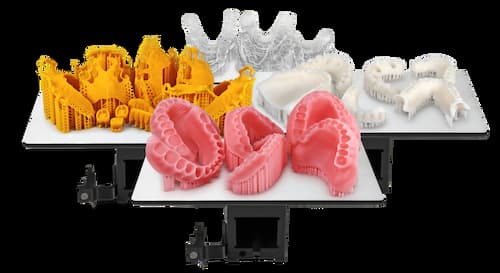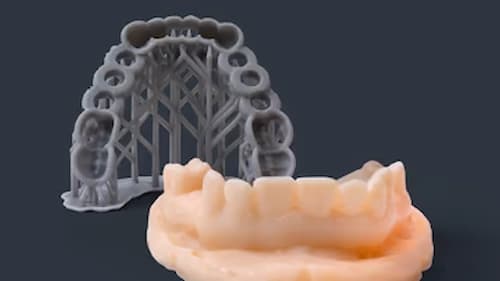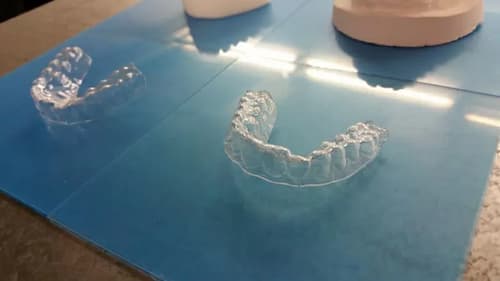
3D printing is currently popular in digital dentistry. Undoubtedly, this industry is constantly innovating to provide better products to its customers.
If you want to start a dental laboratory, you can get various materials on the market. However, the question will solely depend on the machine you will use and the materials you must distinguish yourself from the competition.
Fortunately, we have answers for you in this article. Today, we will look at the top materials most dental labs use to create dental products, particularly those teeth.

Top Materials Used
Draft Resin
Draft resin is an excellent material for orthodontic models, particularly dentures, crowns, and bridges. It is durable and flexible, and it can adapt to most dental products. It can print models in approximately 20 minutes.
Draft resin has a smooth finish, making it ideal for retainers and aligner models, but it can also be a perfect material for implants. This high-quality resin should have a set of 200 microns to achieve a fast-printing speed.
Surgical Guide Resin
For implant replacement, surgical guide resin is the best option. This resin type is used for surgical guides, as the name implies. Manufacturers created this material to provide patients with accuracy, quality, and performance.
This resin is autoclavable as well as biocompatible. If your dental center specializes in providing dental implants, you should buy more of this type of product.
Dental Clear Resin
This resin is ideal for splints and occlusal guards. It is also extremely tough and resistant to fracture. The color-corrected material in the dental LT clear resin prints clear and polishes to high optical transparency.
One of its most noticeable characteristics is that it resists discoloration over time for a finished appliance. You will never be sorry for using such long-lasting and appealing materials to create your dental products.
Model Resin
The model resin is one of the best materials dental clinics use for their products. This type of material, which a dental lab 3d printer always uses, appears ideal for most dental procedures.

Model resin meets restorative dentistry's precision, dependability, and throughput requirements. It also prints correct standard types and dies with friable margins and contacts. However, it is also an excellent material for any modeling.
This material is top-notch, and it produces high-quality results on short deadlines.
Castable Wax Resin
Castable wax resin is another solid material used in 3D printing. It pushes and casts full contour crowns as well as cast copings and substructures, which is one of its best features.
This material has precise and secured margins and 20% wax for dependable molds with clean burnout. Its printed patterns are strong enough to manage without post-cure, allowing for a faster, simpler workflow.
It is one of the most popular and ones of the most affordable materials for dental lab 3d printer.
Permanent Crown Resin
Permanent crown resin is the way to go if you want a long-lasting material for all your dental products. This type produces high-strength, durable restorations with an exact fit.

This material has a low moisture rate and a smooth finish, ensuring more excellent rehabilitation. Meanwhile, when we say it is long-lasting, we mean it has a low propensity to age, discolor, or accumulate plaque.
If you use permanent crown resin on your dental items, you will receive a better and higher-quality benefit. It is efficient and effective and can last longer than other types.
The Bottom Line
Some components stand out with these materials: durability and flexibility. Moreover, it is also critical that the things we mentioned here have specific characteristics that will set them apart from the competition.
Customers will benefit from 3D printing that uses these products. So, we hope you gained valuable insight from what we wrote for you.